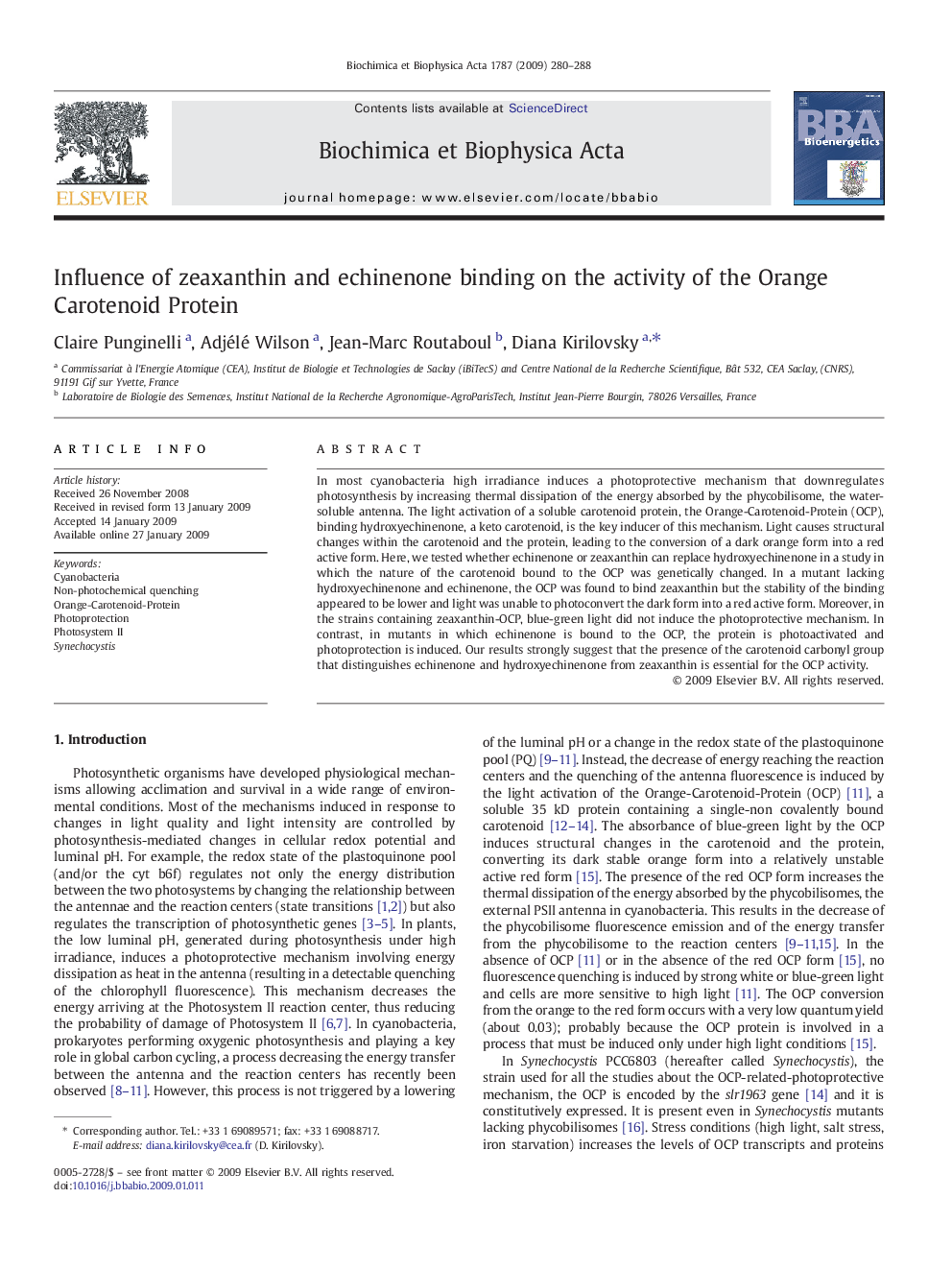| کد مقاله | کد نشریه | سال انتشار | مقاله انگلیسی | نسخه تمام متن |
|---|---|---|---|---|
| 1943182 | 1052651 | 2009 | 9 صفحه PDF | دانلود رایگان |

In most cyanobacteria high irradiance induces a photoprotective mechanism that downregulates photosynthesis by increasing thermal dissipation of the energy absorbed by the phycobilisome, the water-soluble antenna. The light activation of a soluble carotenoid protein, the Orange-Carotenoid-Protein (OCP), binding hydroxyechinenone, a keto carotenoid, is the key inducer of this mechanism. Light causes structural changes within the carotenoid and the protein, leading to the conversion of a dark orange form into a red active form. Here, we tested whether echinenone or zeaxanthin can replace hydroxyechinenone in a study in which the nature of the carotenoid bound to the OCP was genetically changed. In a mutant lacking hydroxyechinenone and echinenone, the OCP was found to bind zeaxanthin but the stability of the binding appeared to be lower and light was unable to photoconvert the dark form into a red active form. Moreover, in the strains containing zeaxanthin-OCP, blue-green light did not induce the photoprotective mechanism. In contrast, in mutants in which echinenone is bound to the OCP, the protein is photoactivated and photoprotection is induced. Our results strongly suggest that the presence of the carotenoid carbonyl group that distinguishes echinenone and hydroxyechinenone from zeaxanthin is essential for the OCP activity.
Journal: Biochimica et Biophysica Acta (BBA) - Bioenergetics - Volume 1787, Issue 4, April 2009, Pages 280–288